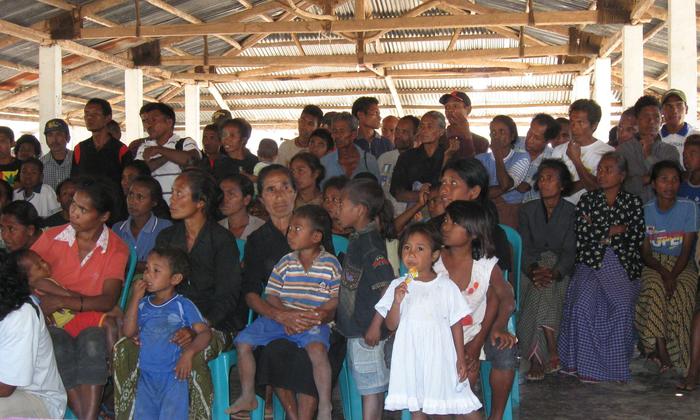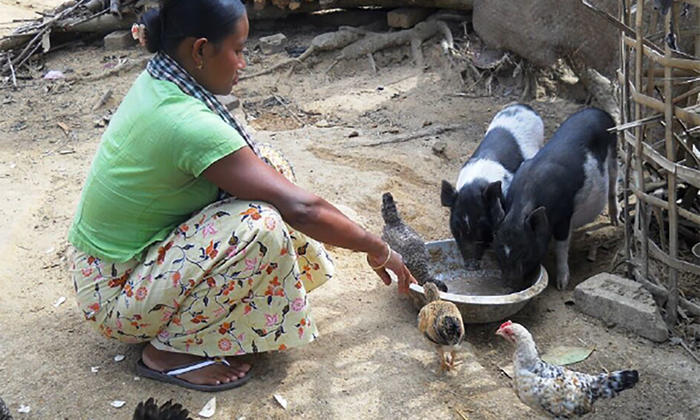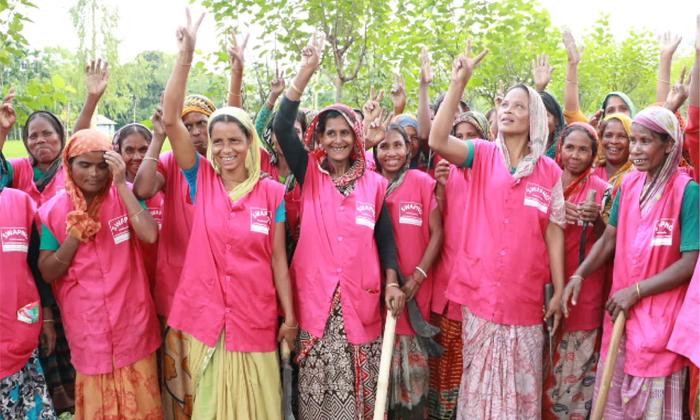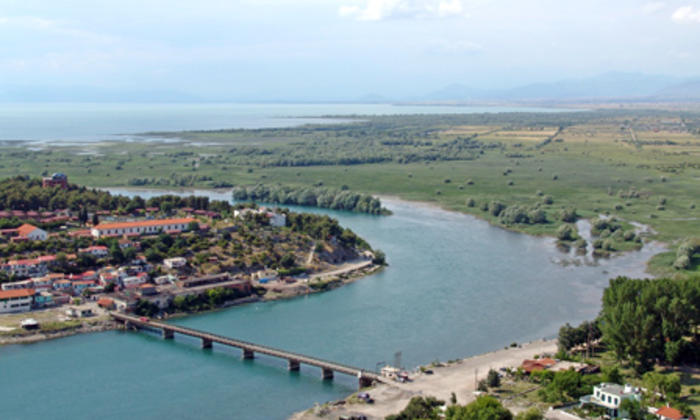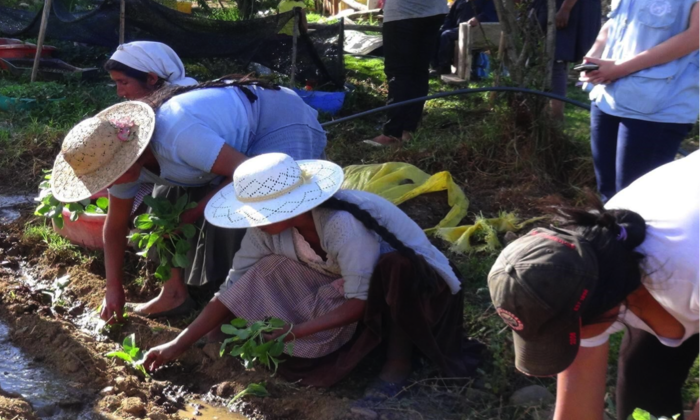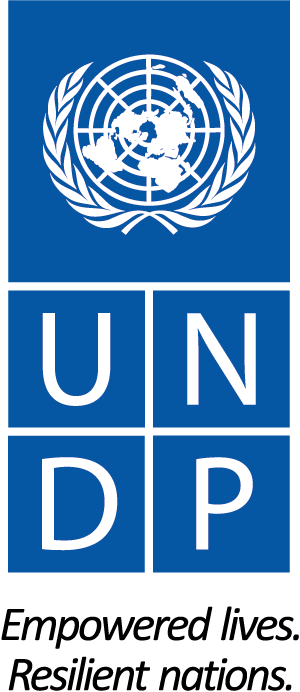Between 2000 and 2009, Mozambique suffered from six droughts and 15 floods. The droughts impacted the lives of over 3.2 million people and the floods affected over six million people
Case study
Irrigated and integrated agro production systems help Mozambique adapt to climate change
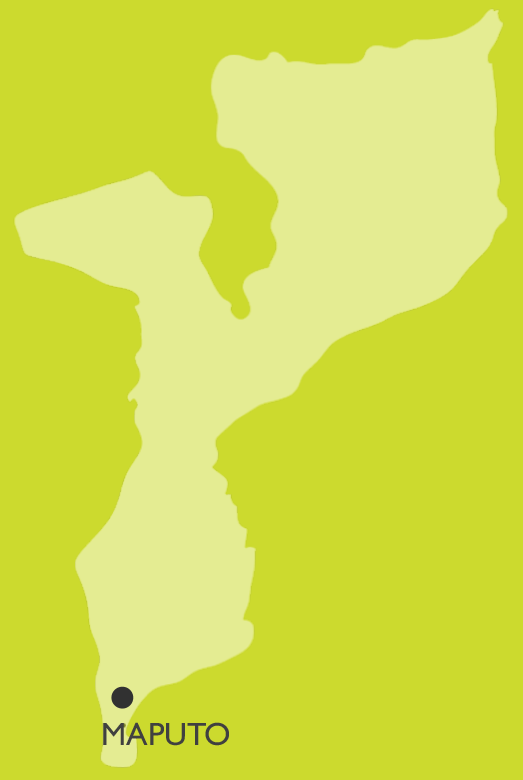
SDGs ADDRESSED
This case study is based on lessons from the joint programme, Mozambique: environment mainstreaming and adaptation to climate change
Read more
Chapters
Project Partners
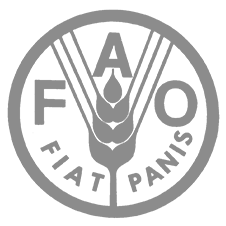
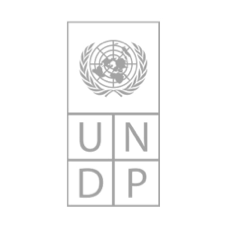
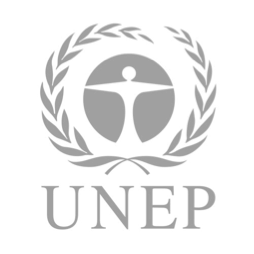
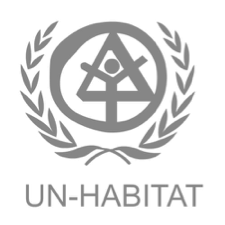
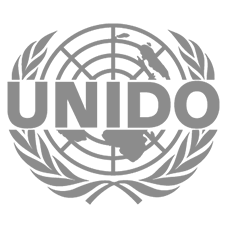
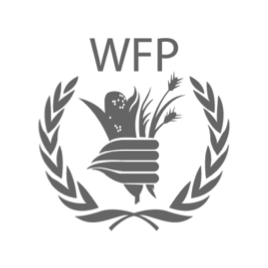
1. SUMMARY
At the start of the joint programme, “Environment mainstreaming and adaptation to climate change” (the Programme), Mozambique experienced increased droughts, floods and cyclones impacting agricultural livelihoods in rural and coastal areas. The Programme worked to ensure that environmental issues were mainstreamed in central and local plans. The Programme worked to help communities adapt to climate change by boosting their coping mechanisms and broadening their options for earning a living.
The Programme assisted three communities by pumping water from the Limpopo River to units which combined crop growing with fish and livestock production. While the Programme solely served semi-arid communities, it demonstrated great potential for replication where sufficient water existed to fill out the tanks from small rivers or lagoons. The Programme created “closed systems” which required virtually no external inputs - waste from crop growing areas became food for the fish and other animals and the manure was returned to the fields. This system improved family diets, increased incomes and was a viable adaptive measure to climate change in dry areas.

Farmer in the Chicualacuala district, on the Limpopo River
2. THE SITUATION
Mozambique’s unpredictable climate frequently caused extreme weather events. Between 2000 and 2009 alone, the country suffered from six droughts and 15 floods. The droughts impacted the lives of over 3.2 million people and the floods affected over six million people. In 2010, both droughts and floods hit the country once again. The double shock left 465,000 people in need of food assistance and wiped out 30 per cent of the cultivated land. Food insecurity became a norm in a country that already had a 37 per cent undernourishment rate.
Although the country had abundant water resources such as the Limpopo River, irrigation was limited. Agricultural land around the Limpopo River was largely rain-fed and therefore vulnerable to unpredictable rates of precipitation. A small number of individuals owned water pumps to produce irrigated crops. There was a high degree of food insecurity in the area and farmers turned to the forest for food and income. Forest resources were consequently over-exploited and dwindling.
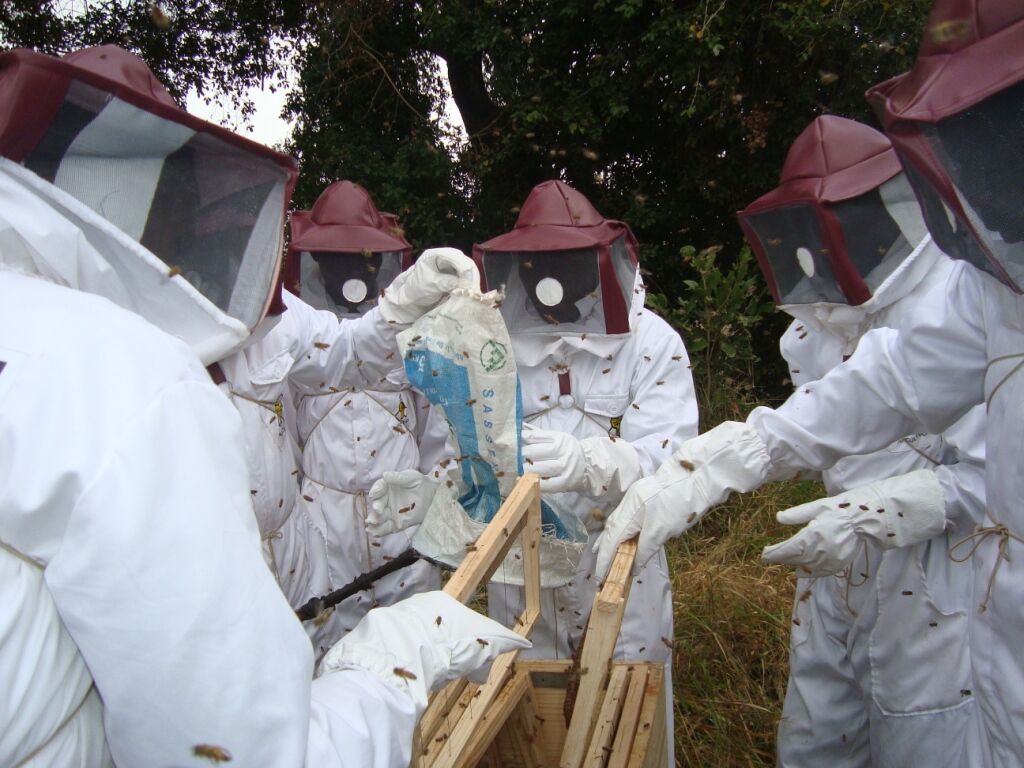
Beekeeping: not envisioned in the project document but initiated based on local requests
3. STRATEGY
The Programme focused on addressing the issue of unpredictable irrigation in the remote district of Chicualacuala on the Limpopo River. To help the farmers, in this semi-arid region, cope with climate change, the UN established a joint programme that leveraged existing water resources. The Programme worked through the agricultural department of the Chicualacuala district government to promote an expansion of irrigated production in areas close to the Limpopo River. Resident communities united in farmer associations (one of which already existed) to better facilitate assistance. Furthermore, Programme staff collaborated with extension staff and community members to implement production activities.
Work initially began in one community and then progressed steadily to others. At each site, the Programme staff, officials from the local government and community members discussed ways to improve food security and climate change adaptation. Irrigated production was identified as a priority given the proximity to the river. Communities identified other needs such as fish farming, crop irrigation systems, livestock production and forestry management to improve food security and promote climate change adaptation measures.
At the community level, the beneficiaries planned and executed activities including water harvesting, agriculture, irrigation, livestock production, integrated fish farming, pig-keeping, forestry management and the creation of natural resource management committees. Women were fully involved in these activities; in some activities such as agriculture, fish farming and pig-keeping, women formed the majority of the workforce.
In each community, interested families signed up to join the farmer associations. The Programme provided barbed wire to protect cultivated land from the intrusion of farm animals. Community members provided the posts and the labour. Each association created a fenced, communal field within which each member had their individual plot; there were no communal plots within these fields.
The Programme provided the initial supply of seeds and agricultural chemicals. Irrigation pumps and tubes were also supplied free of cost.
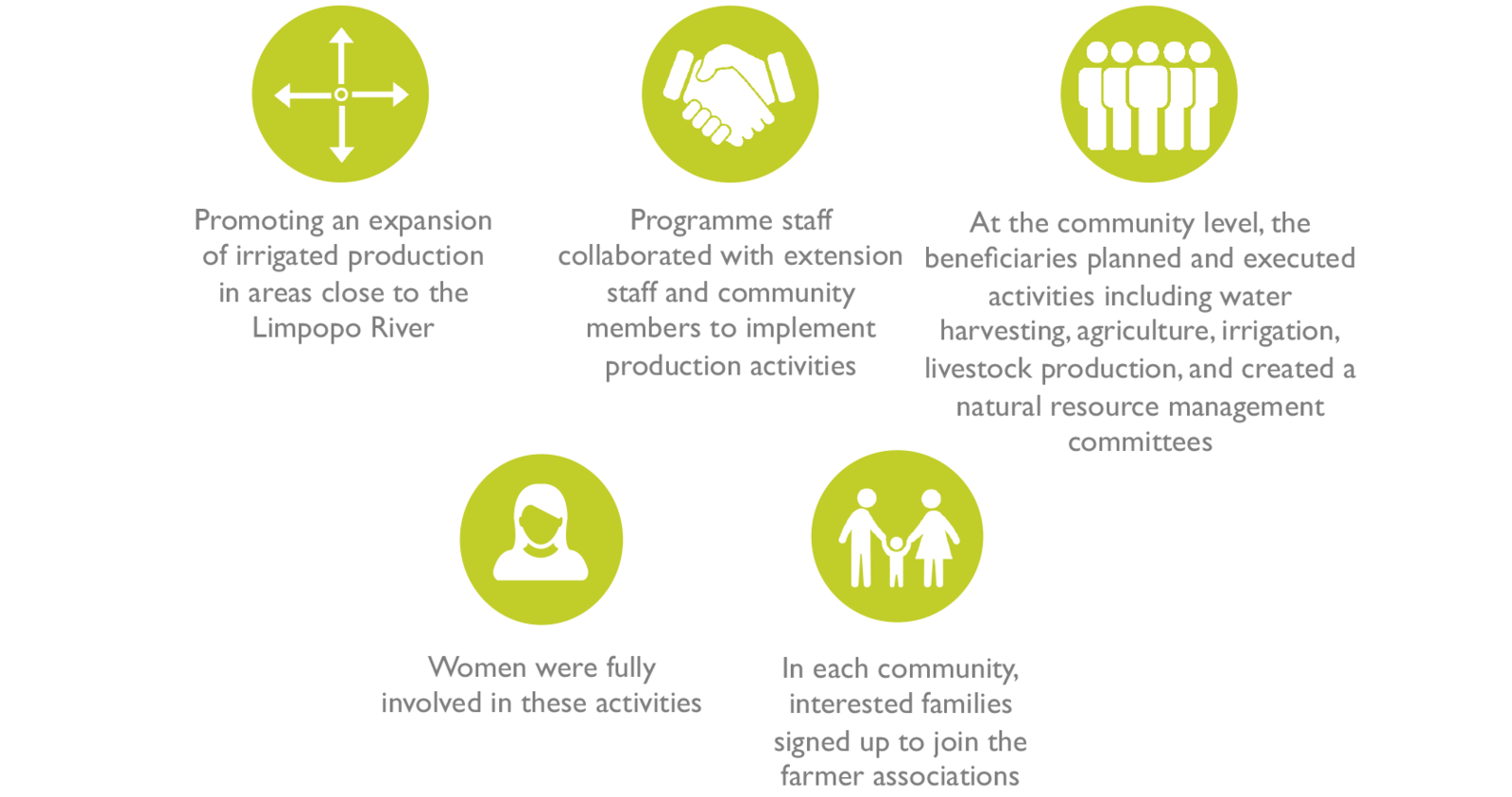
4. RESULTS AND IMPACT
Agricultural production, maintained by about 200 families, increased many times over. This increased incomes, improved diets and, very importantly, reduced pressure on forest resources. Whereas the farmers’ main income source was previously cutting trees and selling charcoal, they were now able to produce food all year round. The use of manure and mulching, as well as small irrigation schemes which were not traditional practices in the area, became mainstreamed for many farmers. Adherence to production practices increased due to increased farmer association membership year on year.
Members of the three farmer associations, the majority of which were women, significantly increased their incomes, through the production and sale of vegetables and other crops as well as rearing animals, with the Programme’s support. With new sources of income, the farmers had the opportunity to improve their homes’ roofing, send children to boarding schools in the main villages, and have the sense of community and social gathering.
Diversification of livelihood measures by using irrigated systems that combined crops, livestock and forest resources, helped the Chicualacuala district adapt to climate change. These systems can be replicated in other regions.

Integrated fish farming in Mapuvule
An increase in agricultural production, during the course of the Programme, increased incomes, improved diets and, very importantly, reduced pressure on forest resources
5. CHALLENGES
The Programme contended with internal disputes between certain influential members of two of the associations. This negatively impacted production activities and management of the fields. The Programme overcame this problem by providing collaboration training to the farmer associations.
The Programme encountered challenges marketing the crops, particularly vegetables, which were the main winter crop. Between 2009 and 2011, over 400 tons of vegetable crops were produced in Chicualacuala. However, overproduction in 2009, coupled with poor market access, resulted in the spoilage of tons of produce.
The Programme responded to the spoilage issue by training farmers in agro-processing techniques such as drying and storage of excess produce. Another response included supplying tractor and agricultural implements to increase the cultivated area and facilitate marketing of products.
A far-reaching innovation from the Programme was the introduction of integrated fish farming within the fenced crop growing areas. To implement this technique, farmers dug fish tanks and stocked them with tilapia. On the banks of the fish tanks, pig sties, duck pens and rabbit cages were built. This created an integrated production system based around crop growing activities, from which waste products and spoiled produce fed fish and other animals. Manure from the animals and the fertilized water from the fish ponds were returned to the fields.
The production of integrated fish farming posed further challenges. Market access was not considered, which resulted in some communities eliminating the fish production activities and solely concentrating on agro-forestry and other livestock activities. This development could be attributed to the fact that Programme staff and government officials only viewed fish farming as a subsistence activity, not as a commercial activity.
Irrigation tanks needed restocking every other week due to evapotranspiration and seepage. Given that using tanks was a fairly new practice in the region, it was integral that their benefits were communicated to ensure continued use, particularly in the case of using pumping systems instead of gravitational systems to stock the ponds.
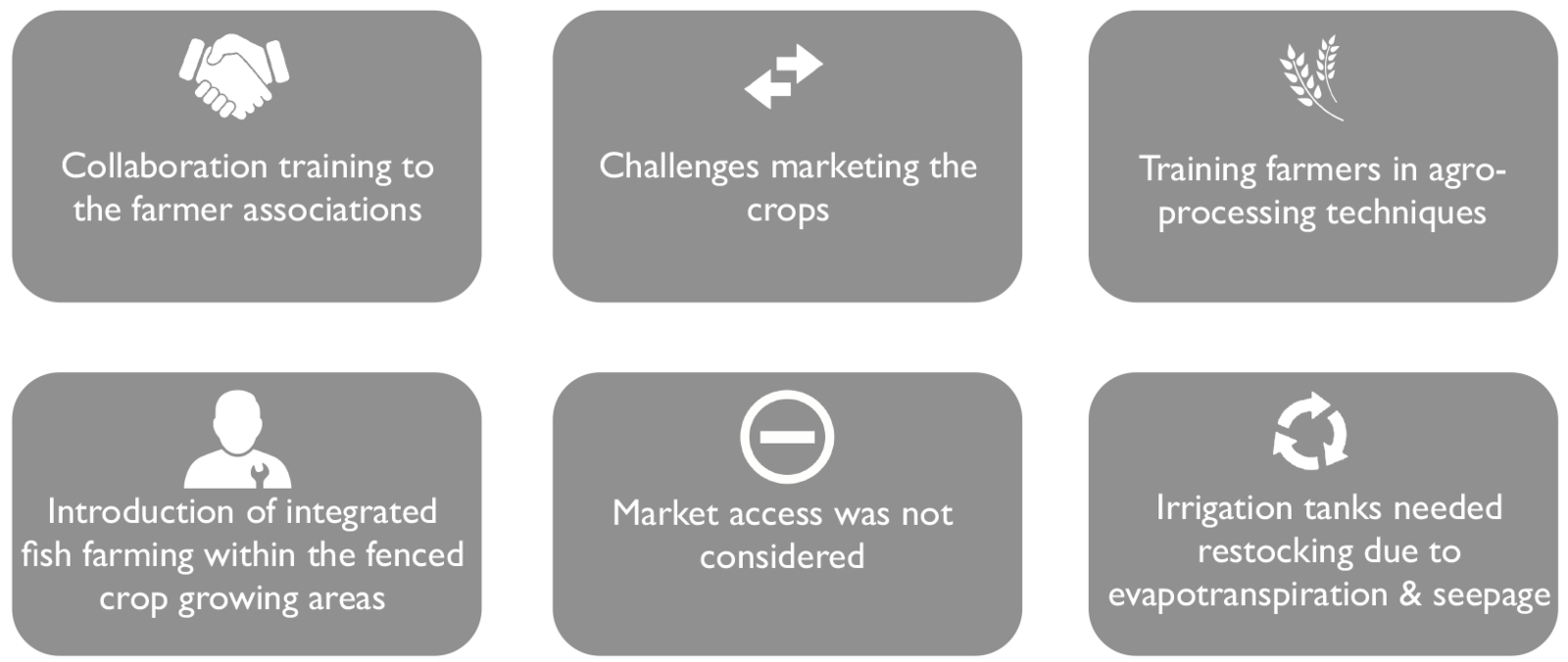
6. LESSONS LEARNED
The Programme produced a publication entitled “Adaptation to climate change in semi/arid environments, experience and lessons from Mozambique1”. Some of the key lessons listed in this publication, as well as others from the evaluation of the Programme, are given below:
- Programme design should be carefully considered for undeveloped remote areas, taking into account realistic timelines, logistical arrangements and budgets. Reconnaissance visits to the project sites and active engagement with local stakeholders to gain an understanding of the local conditions are essential. An assessment of available baseline data is crucial, particularly in a neglected area. Thus, sufficient time needs to be allocated to the design phase.
- In arid and semi-arid regions and remote areas, available data and understanding of what works and what does not work in the local context are very limited. Sufficient time should be allocated to project design and formulation in the inception phase in order to prevent costly inefficiencies during implementation.
- There is general consensus that it would be appropriate and efficient in both implementation and coordination to have a Programme Coordinator for the whole Programme with a separate budget for coordinating the Programme activities amongst the various UN agencies and national partners.
- The “Delivering as One UN” approach is conceptually accepted as a good way towards harmonization between all agencies. A single procurement process would greatly reduce inefficiencies brought about by each agency conducting its own procurement, particularly when some agencies have to conduct international tenders, while others are obliged to conduct national tenders.
- It is critical that there is full involvement and buy-in of the intended beneficiaries and local government leadership from inception. Project design should allow sufficient time to engage with local communities and stakeholders in order to ensure an understanding of the expected benefits of the Programme.
- Beekeeping and integrated fish and small animal farming were not envisioned in the project document but were initiated based on local requests. Such flexibility is important to build resilience in climate change adaptation programmes. Furthermore, the development of value chains, particularly small enterprises, based on the resource endowment of the district, will be an important means to adapting to climate change.
- The use of renewable energy from the sun and organic waste should be supported at all times as a climate change adaptation measure. The technical considerations and barriers must be assessed before deciding on feasibility, particularly relating to biogas. The by-products of biogas can also be used for improving soil fertility, which is a serious constraint in the project area.
The Programme showed that where adequate water, such as a perennial river, exists in arid or semi-arid areas, the potential for producing food through the judicious use of this water is high. Intensive integrated crop and livestock production can significantly improve food security at the district level, increase household incomes and help rural communities adapt to the negative effects of climate change.
7. SUSTAINABILITY AND POTENTIAL FOR REPLICATION
The Programme is replicable in areas where water is available for agricultural production. While Mozambique has abundant perennial rivers, using their water for agricultural production is very limited. There is tremendous potential to increase food production and productivity, improve food security, household nutrition and increase adaptive ability to climate change through the development of irrigated, integrated production systems close to rivers at relatively little cost. Neighbouring countries that share the same river, notably South Africa and Zimbabwe, well understand the value of these water courses for food production.
To build on the work of the Programme and to ensure that progress continues, the following measures are vital:
Water is central and critical to climate change adaptation in Chicualacuala and similar areas. The current and future water resource, from all sources, must be scientifically assessed and used sustainably in order to adapt to climate change and support long-term development. Future project formulation and site selection should also assess water availability potential, as this will significantly influence adaptive capacity to climate change.
Flexibility in climate change adaptation programmes is important in order to incorporate changing conditions and to help build resilience. Crop-livestock integration was not envisaged as an intervention by the project but will remain a very important area for expansion. This technique has significant potential for building resilience and developing crop-livestock synergies in smallholder systems operating under rain-fed conditions and where livestock are crucial resources in adaptation. The development of animal traction rather than the conventional mechanized ploughing could serve as a more affordable and environmentally sustainable solution to the problem of climate change.
Agro-fish farming is an important area for further study. It offers substantial prospects for building resilience and developing crop-livestock synergies in a smallholder system operating under gravitational water systems from perennial water bodies and where livestock are crucial resources in adaptation. For these systems to be viable, consideration must be given to food preservation techniques as well as to market access for surplus produce.
Urgent attention to managing and regulating the harvesting of forest resources, combined with the strengthening of alternative income generation from sources other than charcoal, is vital to climate change adaptation. The development of community forest management plans and the introduction of by-laws can maintain the ecological stability of the forests.
The development of value chains, particularly small enterprises, based on the resource endowments of the district, will be an important means to adapt to climate change.

Members of a farmers association

